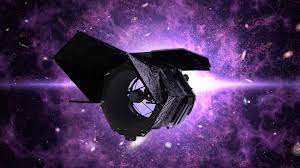Nancy Grace Roman Space Telescope:

Scientists have created a gargantuan synthetic survey of a section of the universe that shows what we can expect from the Nancy Grace Roman Space Telescope’s future observations
- Nancy Grace Roman Space Telescope or Roman Space Telescope (RST) is a NASA deep space infrared observatory.
- Though originally referred to as the Wide Field Infrared Space Telescope (WFIRST), NASA renamed the mission in 2020 after Nancy Grace Roman, NASA’s first chief astronomer.
- RST will help answer essential astrophysics questions about dark energy, dark matter, exoplanets, and infrared astrophysics.
- It is set to launch around 2026 or 2027.
- The mission is projected to last for five years.
- RST will be situated at Lagrange point 2, a stable gravitational point between Earth and the sun located around 1 million miles (1.5 million kilometers) from our planet.
- The primary mirror of the RST has a diameter of 2.4 meters, the same size as the mirror of the Hubble Space Telescope.
- It will have a field of view that is 100 times greater than the Hubble infrared instrument, capturing more of the sky with less observing time.
- Roman’s gigantic field of view will enable the mission to create infrared images that are around 200 times larger than the Hubble Space Telescope.
- It has two other instruments: the Wide Field Instrument and the Coronagraph Instrument.
- The Wide Field Instrument performs microlensing surveys to find exoplanets, and the Coronograph Instrument performs high-contrast imaging and spectroscopy of nearby exoplanets.




